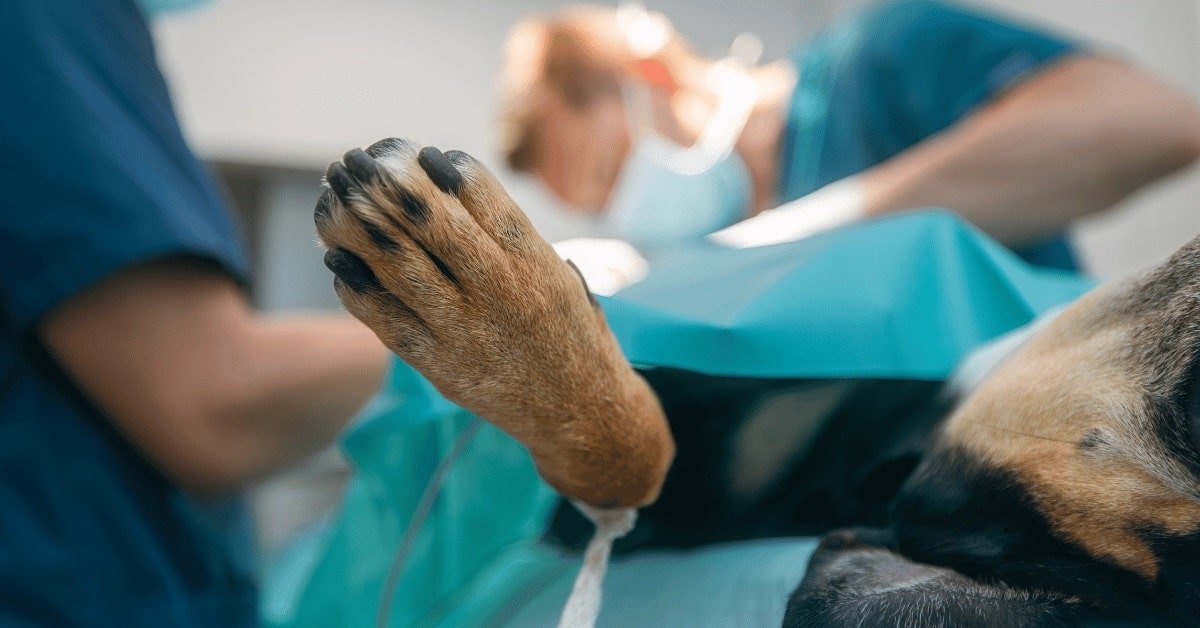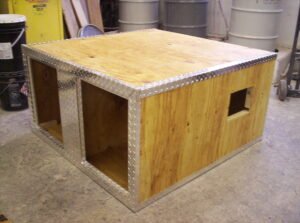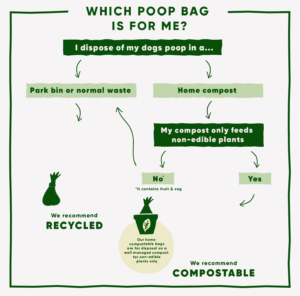Dog surgery typically takes between 30 minutes to several hours, depending on the procedure’s complexity. Factors like the dog’s health and type of surgery influence the duration. So let’s read: How Long Does Dog Surgery Take?
Dog owners often worry about how long their pet’s surgery will last. Knowing the average duration can ease some of that anxiety. Simple procedures, such as spaying or neutering, usually take around 30 minutes to an hour. More complex surgeries, like orthopedic or internal operations, can extend to several hours.
The veterinarian’s expertise and the dog’s overall health condition also play crucial roles. Understanding these factors helps pet owners prepare better and ensures they follow post-operative care guidelines for a smooth recovery. Always consult your vet for specific details related to your dog’s surgery.
Table of Contents
Introduction To Dog Surgery
Dog surgery can be a stressful time for pet owners. Understanding the process helps ease anxiety. Surgeries vary in complexity and duration. This guide covers common types, purposes, and benefits.
Common Types
Dog surgeries fall into several categories. Each type serves a different purpose.
- Spaying/Neutering: Prevents unwanted litters and reduces certain health risks.
- Orthopedic Surgery: Treats bone and joint issues, like fractures and ligament tears.
- Soft Tissue Surgery: Includes tumor removal and wound repair.
- Dental Surgery: Addresses tooth extractions and gum disease.
Purpose And Benefits
Dog surgeries improve health and quality of life. Each procedure has specific benefits.
| Type of Surgery | Purpose | Benefits |
|---|---|---|
| Spaying/Neutering | Control population | Reduces cancer risk |
| Orthopedic Surgery | Fix bones and joints | Restores mobility |
| Soft Tissue Surgery | Remove tumors | Prevents disease spread |
| Dental Surgery | Remove bad teeth | Improves oral health |
Knowing the types and benefits helps in making informed decisions. Always consult with your vet for the best outcome for your pet.
Pre-surgery Preparations
Preparing your dog for surgery involves several important steps. These steps ensure the safety and success of the procedure. Understanding each step helps pet owners feel more at ease.
Initial Consultations
The first step is the initial consultation with the veterinarian. During this visit, the vet will:
- Evaluate your dog’s overall health
- Discuss the details of the surgery
- Answer any questions you may have
The vet will also explain the risks and benefits of the surgery. This helps you make an informed decision. It’s crucial to share your dog’s medical history during this time.

Credit: https://www.laveenvetcenter.com
Pre-surgery Tests
Next, your dog will undergo pre-surgery tests. These tests ensure your dog is fit for surgery. Common tests include:
- Blood tests
- Urine tests
- X-rays
- Ultrasounds
These tests help detect any underlying conditions. If any issues are found, the vet may adjust the surgery plan.
Here is a table summarizing the pre-surgery tests:
| Test Type | Purpose |
|---|---|
| Blood Tests | Check organ function and detect infections |
| Urine Tests | Assess kidney health |
| X-rays | Inspect bones and chest |
| Ultrasounds | Examine internal organs |
Pre-surgery preparations also include fasting. Your vet will advise you on the proper fasting period. This step reduces the risk of complications during anesthesia.
Factors Affecting Surgery Duration
Understanding the duration of your dog’s surgery is crucial. Several factors can influence how long the procedure will take. Knowing these can help you prepare better and ease your concerns.
Type Of Surgery
The type of surgery your dog needs significantly affects the duration. Simple procedures like spaying or neutering may take about an hour. Complex surgeries, such as orthopedic or internal organ repairs, can take several hours. The surgeon’s skill and the equipment used also play a role.
Dog’s Health Condition
Your dog’s health condition is another critical factor. A healthy dog usually undergoes surgery quicker. Dogs with underlying conditions like diabetes or heart issues need more time. Pre-surgery assessments and additional care extend the surgery duration.
| Factor | Impact on Duration |
|---|---|
| Type of Surgery | Simple surgeries are quicker, complex ones take longer |
| Dog’s Health Condition | Healthy dogs are quicker, health issues extend time |
Preparing for your dog’s surgery involves understanding these key factors. This knowledge helps manage your expectations and reduces anxiety.
Average Timelines For Common Surgeries
Wondering how long your dog’s surgery might take? Different surgeries have different timelines. Let’s explore the average duration for some common dog surgeries.
Spaying/neutering
Spaying and neutering are routine surgeries. They prevent unwanted litters and have health benefits. Spaying is for female dogs. Neutering is for male dogs. Both surgeries are quick and safe.
- Spaying: The surgery usually takes 20 to 90 minutes.
- Neutering: This surgery often lasts 15 to 30 minutes.
The timeline can vary. Factors include the dog’s age, size, and health. Your vet will give you a more accurate estimate.
Orthopedic Procedures
Orthopedic surgeries fix bone and joint issues. They are more complex and take longer.
| Procedure | Average Duration |
|---|---|
| Cruciate Ligament Surgery | 1 to 2 hours |
| Hip Dysplasia Surgery | 2 to 4 hours |
| Fracture Repair | 1 to 3 hours |
These times are approximate. Your vet will consider the specific needs of your dog.
During The Surgery
Understanding what happens during your dog’s surgery can ease your worries. This section breaks down the process into clear steps.
Anesthesia Administration
The surgical team will first administer anesthesia. This ensures your dog feels no pain during the procedure. The veterinarian carefully calculates the dose based on your dog’s weight and health condition. Anesthesia usually takes effect quickly, making your dog unconscious within minutes.
Monitoring And Support
Once under anesthesia, your dog will be closely monitored. Vital signs such as heart rate, breathing, and blood pressure are checked constantly. The team uses specialized equipment for this purpose. Monitoring ensures your dog stays stable throughout the surgery.
| Vital Sign | Monitoring Tool |
|---|---|
| Heart Rate | ECG Machine |
| Breathing | Respiratory Monitor |
| Blood Pressure | Blood Pressure Cuff |
The veterinary team also provides supportive care. This includes maintaining body temperature and ensuring proper hydration. They use warm blankets and IV fluids to keep your dog comfortable and safe.
These measures help reduce the risk of complications. With constant monitoring and support, your dog’s surgery is in good hands.
Post-surgery Recovery
Understanding the post-surgery recovery process is crucial for your dog’s health. Proper care ensures a smooth and speedy recovery. This section will cover the essentials of post-surgery recovery.
Immediate Aftercare
After surgery, your dog needs a calm and quiet place. Ensure they have a comfortable bed. Keep their space free of noise and stress.
- Monitor Vital Signs: Check your dog’s breathing and heart rate.
- Offer Water: Make sure fresh water is available.
- Administer Medications: Follow the vet’s instructions carefully.
Be attentive to your dog’s needs. Watch for signs of pain or discomfort. Contact your vet if anything seems unusual.
Long-term Healing
Long-term healing involves several weeks of care. Your dog’s energy levels will gradually return.
- Limit Physical Activity: Avoid strenuous activities.
- Regular Vet Check-ups: Schedule follow-up visits.
- Maintain a Healthy Diet: Provide a balanced diet.
Pay attention to your dog’s wound healing. Keep the area clean and dry. Use any prescribed ointments as directed.
| Week | Activity Level | Care Tips |
|---|---|---|
| 1 | Very Low | Rest and monitor closely |
| 2-3 | Low | Short, supervised walks |
| 4-6 | Moderate | Gradually increase activity |
Long-term healing is a gradual process. With the right care, your dog will recover fully.
Potential Complications
Dog surgery, like any medical procedure, carries potential risks. Understanding these complications helps you take better care of your furry friend. Recognizing problems early can make a big difference in recovery. Let’s look at the main issues and how to handle them.
Recognizing Issues
Post-surgery, your dog might show signs of trouble. Watch for these symptoms:
- Excessive swelling or redness
- Persistent vomiting or diarrhea
- Unusual lethargy or weakness
- Difficulty breathing or coughing
- Pain that doesn’t improve
If you see any of these signs, act quickly. Early detection can prevent serious problems.
When To Contact The Vet
Always contact your vet if you notice any of the following:
- Bleeding that won’t stop
- High fever or chills
- Infection at the surgery site
- Loss of appetite for more than a day
- Unusual discharge from the wound
Keep your vet’s contact information handy. Don’t hesitate to call with any concerns. Your dog’s health is the top priority.
Expert Tips For Owners
Dog surgery can be stressful for both pets and their owners. Knowing what to expect can ease your worries. Here are some expert tips to help you prepare for surgery day and support your dog’s recovery at home.
Preparing For Surgery Day
Proper preparation can make surgery day smoother. Follow these steps to ensure your dog is ready:
- Follow Fasting Instructions: Most vets ask for no food 12 hours before surgery.
- Exercise Your Dog: Give your dog light exercise to calm their nerves.
- Bring Comfort Items: Bring a favorite toy or blanket to the vet.
- Arrive Early: Arriving early reduces stress and allows time for paperwork.
Supporting Recovery At Home
After surgery, your dog needs a calm environment to heal. Here are key tips:
- Create a Recovery Area: Set up a quiet space with a soft bed.
- Monitor Eating and Drinking: Ensure your dog eats and drinks as instructed by the vet.
- Administer Medications: Follow the vet’s instructions for any medications.
- Limit Activity: Keep your dog from running or jumping to avoid injury.
- Watch for Signs of Infection: Look for redness, swelling, or unusual discharge.
| Preparation Step | Details |
|---|---|
| Fasting | No food 12 hours before surgery |
| Exercise | Light exercise to calm nerves |
| Comfort Items | Bring favorite toy or blanket |
| Arrive Early | Reduces stress and allows time for paperwork |
Frequently Asked Questions
How Long Does Dog Surgery Take?
The duration of dog surgery varies. It can take from 30 minutes to several hours. It depends on the type and complexity of the procedure.
What Affects Dog Surgery Time?
Several factors affect surgery time. These include the dog’s health, the complexity of the surgery, and the surgeon’s experience.
Is Dog Surgery Longer For Older Dogs?
Yes, older dogs often require longer surgery times. Their age and potential health issues can complicate procedures, extending the duration.
Are There Risks In Long Dog Surgeries?
Long surgeries can increase risks. These include anesthesia complications, infection, and prolonged recovery times. Always discuss potential risks with your vet.
Conclusion
Understanding the duration of dog surgery helps pet owners prepare better. Each procedure varies based on complexity and the dog’s health. Always consult with your veterinarian for precise information. This ensures you provide the best care and support for your furry friend during their recovery.



